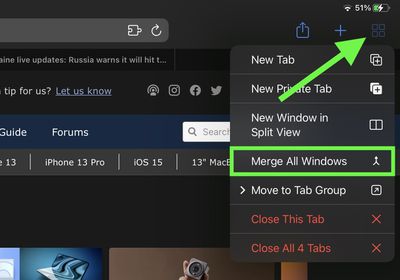Can Someone Access My Computer Remotely Without Me Knowing
There are a number of ways that someone can access your computer remotely without you knowing. This can be done through a variety of methods, including remote desktop applications, online services, and even physical access to your computer. While it may seem like a daunting task to keep track of all the ways someone can access your computer, there are a few simple steps you can take to protect yourself from unwanted remote access.
Check if someone has used your computer, or you are being monitored while working remotely.
It’s a scary thought, but yes, someone can access your computer remotely without you knowing. There are a few ways they can do this, including using remote access software or installing spyware on your computer.
If you’re worried that someone has accessed your computer without your knowledge, there are a few things you can do to check.
First, take a look at your recent activity and see if there’s anything unusual. If you see any strange IP addresses or unknown programs running, that could be a sign that someone is remotely accessing your machine.
You can also check your security settings to see if any unauthorized devices have been granted access to your system.
Finally, run a virus scan to check for any malicious software that may have been installed on your machine.
If you suspect that someone has accessed your computer without your permission, it’s important to take action quickly. Change all of your passwords and enable two-factor authentication if possible.
You should also contact an IT professional to help secure your system and prevent further intrusion.
How to Stop Someone from Accessing My Computer Remotely Windows 10
If you’re concerned that someone might be remotely accessing your Windows 10 computer without your permission, there are a few steps you can take to prevent it.
First, make sure that the Remote Desktop feature is turned off in your system settings. To do this, go to Start > Settings > System > Remote Desktop and ensure that the “Allow remote connections to this computer” switch is set to Off.
Next, check for any open ports on your computer that could be used for remote access. To do this, open the Command Prompt and enter “netstat -a.” This will list all of the active network connections on your computer, both incoming and outgoing.
If you see any suspicious looking IP addresses listed under the “Remote Address” column, make a note of them.
Finally, install a firewall on your computer and make sure it’s properly configured. A firewall will help to block any incoming connections from remote computers, keeping your system safe from intrusion.
How to Tell If Someone is Remotely Viewing Your Computer at Work
If you’re concerned that someone might be remotely viewing your computer at work, there are a few things you can look for. First, check to see if your computer’s webcam is activated. If it is, there’s a chance that someone could be watching you through it.
You can also check the activity logs on your computer to see if any suspicious activity has been going on. If you notice anything unusual, it’s possible that someone has been remotely accessing your machine.
If you’re worried that someone is spying on you through your computer, the best thing to do is talk to your IT department or employer.
They’ll be able to help you figure out what’s going on and take steps to protect your privacy.
How to Tell If Someone is Remotely Viewing Your Computer
Are you worried that someone may be remotely viewing your computer? Maybe you’ve noticed strange activity on your machine, or maybe you’re just paranoid. Either way, it’s important to know how to tell if someone is remotely viewing your computer.
There are a few signs that may indicate that someone is remotely viewing your machine. First, take a look at your CPU usage. If you see spikes in usage when you’re not doing anything demanding, that’s a good sign that someone is on your machine.
Another sign is unusual network activity. If you see outgoing connections when you’re not using the internet, or if your internet speeds are slower than usual, those could be signs of remote access.
Finally, keep an eye out for any new programs or files on your machine.
If there’s something new and you didn’t install it yourself, it’s possible that someone has installed software to allow them remote access.
If you notice any of these signs, it’s possible that someone is remotely viewing your computer. However, there could be other explanations as well; for example, high CPU usage could simply mean that you have too many programs open at once.
If you’re unsure whether or not someone is accessing your machine without permission, it’s best to err on the side of caution and contact a professional for help.
How to Check If Someone is Remotely Accessing Your Computer Windows 10
If you’re concerned that someone may be remotely accessing your Windows 10 computer, there are a few steps you can take to check. Keep in mind, however, that if someone has access to your computer, they may have installed software that makes it difficult or impossible to detect their activity.
To check for remote access on Windows 10:
1. Open the Start menu and search for “Event Viewer.”
2. In the Event Viewer window, expand “Windows Logs” and click on “Security.”
3. Look for any events with the Event ID 4625 (An account failed to log on).
These events will include information about where the attempt was made from and whether it was successful. If you see multiple failed attempts from the same IP address, this could indicate someone trying to gain unauthorized access to your computer.
4. You can also check for remote desktop connections by opening the Start menu and searching for “Remote Desktop.”
This will open the Remote Desktop Connection application. If anyone has accessed your computer via Remote Desktop, there will be an entry here showing when the connection was made and from what IP address.
Can Remote Access Be Traced
If you’re wondering whether or not remote access can be traced, the answer is yes. In most cases, remote access is traceable and can be used to identify the person who accessed a system remotely.
There are a few different ways that remote access can be traced.
One common way is through IP address logs. When someone connects to a system remotely, their IP address is typically logged by the system. This means that if someone wanted to track down who accessed a system remotely, they could check the IP address logs to see who was connecting from what location.
Another way that remote access can be traced is through user activity logs. Most systems keep track of user activity, including when users login and logout, what files they accessed, and what actions they took while on the system. This information can be used to identify which user was accessing the system remotely.
In some cases, it may also be possible to physically trace back a connection to its source. For example, if someone was accessing a system via an Ethernet connection, it would be possible to follow that cable back to its point of origin and determine where the connection was coming from. However, this type of tracing isn’t always possible or practical.
Overall, there are several ways thatremote access can be traced . In most cases , it’s possible to identify who was accessing a system and where they were located when they did so . If you’re concerned about someone accessing your systems without your permission , make sure you have proper security measures in place so you can detect and trace any unauthorized access attempts .
Can You Tell If Someone is Remotely Accessing Your Computer?
If you’re concerned that someone may be remotely accessing your computer, there are a few tell-tale signs you can look for.
One of the most obvious ways to tell if someone is remotely accessing your computer is by looking at the activity on your screen. If you see somebody moving your mouse cursor or typing on your keyboard, that’s a pretty clear sign that someone is remotely controlling your machine.
Another way to tell if someone is remotely accessing your computer is by checking the network activity on your machine. If you see unusually high amounts of traffic being sent to and from your IP address, it’s possible that someone is trying to gain access to your system. You can check this by opening up the Task Manager and looking at the Networking tab.
If you suspect that someone has gained remote access to your computer, it’s important to take steps to secure your system immediately. Be sure to change all of your passwords, run a virus scan, and disable any remote access tools that may be installed on your machine. By taking these precautions, you can help protect yourself from malicious actors who might try to use remote access tools for nefarious purposes.
Can Someone Remotely Access My Computer When It’S Off?
One of the most common questions we get asked here at IT Central Station is whether or not it’s possible for someone to remotely access a computer when it’s turned off. The answer, unfortunately, is yes – but there are a few things you can do to make it more difficult.
In order for someone to remotely access your computer, they would need to have physical access to it first in order to install malicious software or hardware.
Once they have done this, they can then remotely connect to your machine and carry out various tasks – including turning it on and off!
There are a few things you can do to make it more difficult for someone to gain remote access to your computer:
1. Keep your anti-virus software up-to-date and run regular scans.
This will help to identify and remove any malware that may have been installed on your machine.
2. Use a firewall. This will help to block incoming connections from known malicious IP addresses.
3. Keep your operating system and software up-to-date with the latest security patches. These patches often fix vulnerabilities that could be exploited by attackers.
4. Use strong passwords and don’t reuse them across different accounts.
If an attacker gains access to one of your accounts, they will try using the same password on other accounts belonging to you in an attempt to gain further access.
How Do I Keep My Computer from Being Accessed Remotely?
If you’re concerned about someone accessing your computer remotely, there are a few things you can do to prevent it. First, make sure that all your software is up to date. Outdated software is one of the most common ways for hackers to gain access to a system.
Next, use a firewall and antivirus program to protect your computer from outside threats. Finally, be careful about what information you share online. Avoid clicking on links from unknown sources and don’t download files from people you don’t know.
By taking these precautions, you can help keep your computer safe from remote access.
Conclusion
If you’re worried that someone might be able to access your computer remotely without your knowledge, there are a few steps you can take to protect yourself. First, make sure that your firewall is turned on and that you have the latest security updates for your operating system. You can also install software that will detect and block remote access attempts.
Finally, don’t forget to use a strong password for your account and be careful about what information you share online. By taking these precautions, you can help keep your computer safe from unwanted remote access.


